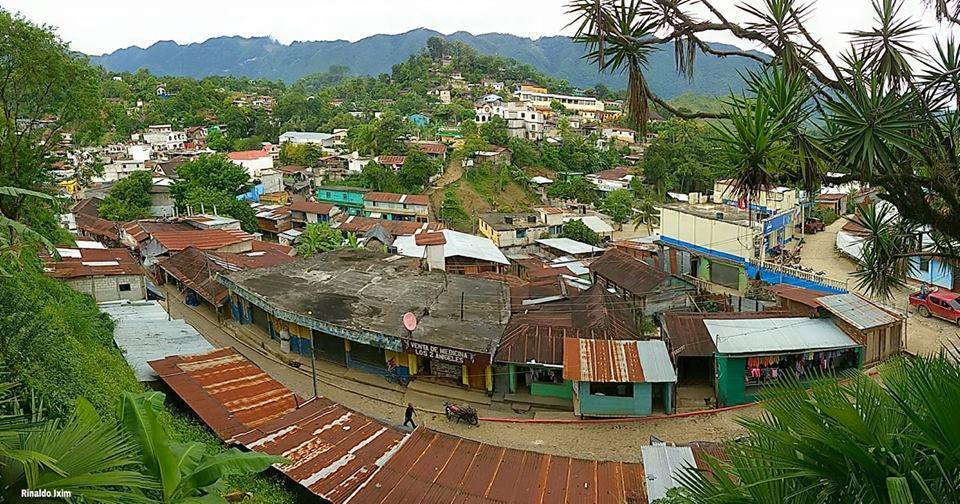Why we are going to Guatemala, and what we plan to do:
A temple for Coban, Guatemala, was announced at the October 2018 General Conference. Bob and I felt a special "tug" to go to Guatemala and serve the people in the Coban area -- to help them prepare for the temple. In our communication with the Coban Mission President, we learned that 60% of the people in the Coban Mission speak the Kekchi language, a native Mayan language. Many of the people in that mission live in the mountains North and East of Coban -- driven there originally by the Spanish conquistadors. These people were never officially conquered, but they eventually learned how to live peacefully among the Spanish.
Soon after we decided to serve a mission in Guatemala the Covid-19 pandemic hit, and it was not possible for a couple as old as us (I am 78 and Bob is 82) to serve a mission outside of our home country. So, after continued communication with the Mission President, we decided to move to Guatemala, to serve as best we could as members of the Church. I also began a serious effort to learn the Kekchi language.
We planned to leave in August, but the airlines stopped flying to Guatemala. Soon after the airways opened up again, Hurricane Eta hit the area. The Category 4 hurricane caused extreme havoc in Honduras and Nicaragua. In the Coban area there was extensive flooding. In one area, the storms created mudslides that buried a whole village. The rivers and streams were filled with mud, and the wells were contaminated.
From our past experience working the people in refugee camps, we knew that water-born diseases, after such disasters, can be additionally devastating, so we began a project to raise money to send water purification filters to these people. God heard our prayers, and inspired people came forward to provide the needed funds. My Kekchi teacher gave us the contact information of a man who previously served as the Coban Stake President. He is now living in Utah, and he provided the names of people in the Coban area to coordinate our efforts (in conjunction with the Sustainable Families Group). He had a brother who was the mayor of Cahabon, and their city water system had also been damaged, so they were in desperate need of help. So this became the area of focus. Eventually we raised the money to provide 5,000 filters and buckets, at a value of $114,000.
Bob went to Guatemala in November, with a group of men, to teach the people how to use the water filters. He stayed in the home of the Mayor of Cahabon. The Mayor soon learned of Bob's agriculture experience, and the work we have done in Kenya and Uganda -- to help the peasant farmers overcome their poverty so they could take orphans into their homes.
There are about 7,000 people living in the city of Cahabon, but 70,000 people live in the surrounding mountainous area. 95% of the people are Kekchi. They are very poor, and the subsistence farmers barely provide food for their families. The Mayor asked Bob if he could come to Cahabon to help the people improve their agriculture and help them rise of out their extreme poverty.
Our original intent was to help the people prepare for the Coban temple. While there are many Branches, Wards and Stakes in nearby towns, the Cahabon area has not had missionaries for over 40 years, because of some bad actions of missionaries. The small Branch was closed down. We talked to the Mission President about possibly living in Cahabon, to help the people with agriculture and other projects. The hurricane, and water filters, had opened some important doors. One thing led to another, and the Coban Mission President has now assigned us to live in Cahabon -- to build relationships of trust. We don't know how long that assignment will last, but we are planning to live in Cahabon until the Temple is dedicated. The groundbreaking occurred in November, so it will probably be about 2 years.
Bob and I are leaving for Guatemala on Thursday (Jan 7th). Bob is working hard to research the possibilities in the Cahabon area, and several agriculture opportunities have opened up, but we need to raise the money to get these projects started. All our efforts will be to help the people become self-sustaining. We will only promote projects that are sustainable. We plan to help them set up Community Development Centers (CDCs), much as we did in Africa, to help the people with the production and marketing of their crops.
Our goal is to raise $100 per family, to get the project started. This would be a one-time donation for each family, because they will be able to continue helping themselves after the CDC is in place. In Africa we also taught the farmers how to become certified with GLOBALGAP -- so they could sell their produce internationally. Marketing was a key to their success. (This is Bob's forte -- marketing -- a necessary part of any production plan.)
If you have made it this far in this long recitation of our need for help, we would appreciate it if you could tell us of anyone that might be willing to provide some seed money for this important project. These are special people who need our help.
If you leave your email on this blog, and "subscribe" you will be notified each time we provide a progress report.
You can go to welcomehand.org, or sustainablefamilies.group, to make a donation.









